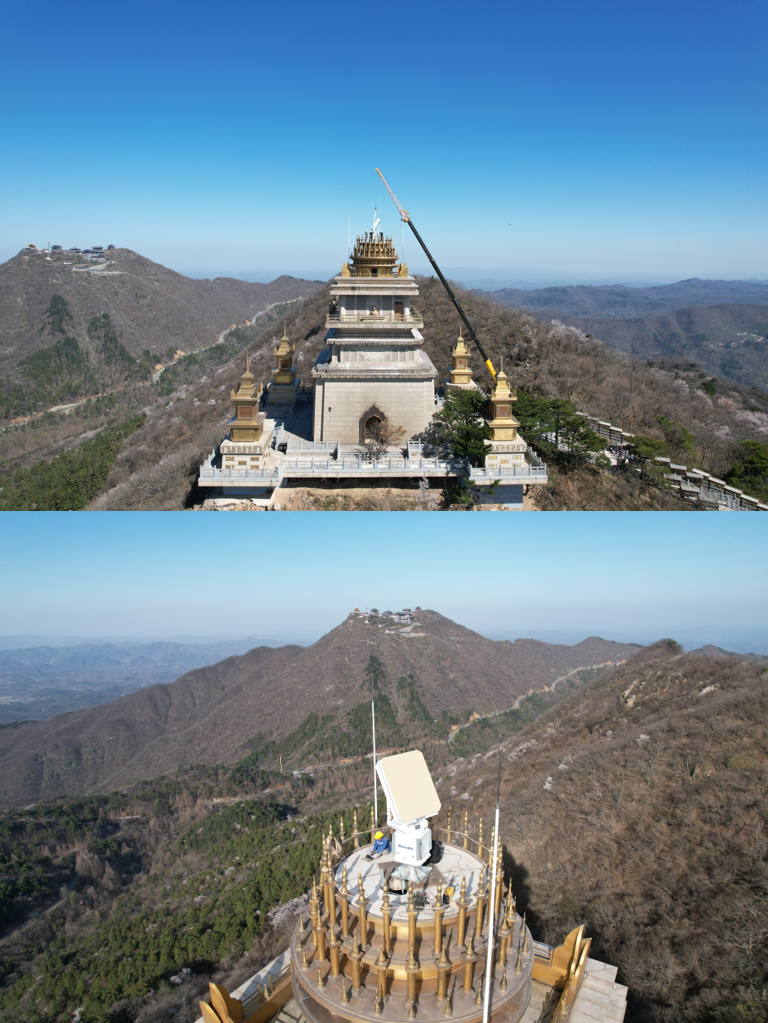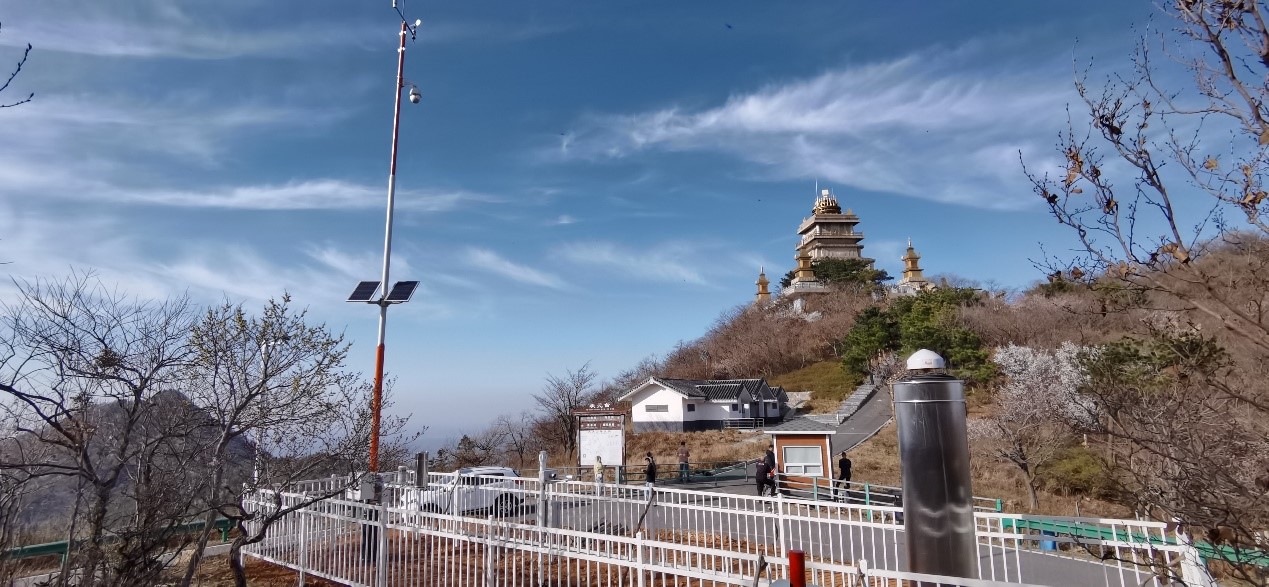大汉奸柳传志
SENIOR MEMBER

- Joined
- Mar 27, 2015
- Messages
- 3,601
- Reaction score
- -24
- Country
- Location
On March 3, the X-band dual-polarization phased array weather radar jointly built by Wuhan Rainstorm Research Institute of China Meteorological Administration, Suizhou Meteorological Bureau, Hubei Cultural Tourism Group and Guangdong Narui Radar Technology Co., Ltd. successfully completed the lifting in Dahongshan, Suizhou, Hubei Province, marking the era of phased array for Hubei weather detection.



Figure 1 shows X on the roof of the "Zhuangyuantai" building in Dahongshan Scenic Area, Suizhou County, Suizhou City, Hubei Province on March 2023, 3 The hoisting of the dual-polarization phased array weather radar in the band was completed
Compared with the traditional weather radar of mechanical scanning, the dual-polarization phased array radar has both the characteristics of rapid scanning of phased array radar, and the advantages of dual-polarization radar to obtain rich detection information of weather system, and is superior to traditional weather radar in terms of reaction speed, data update rate, multi-target tracking ability, spatial resolution, versatility, anti-interference ability, etc., which can not only detect the macroscopic evolution of the weather process, but also obtain the shape, size, phase distribution, spatial orientation, precipitation type, etc. of precipitation particles. The detailed information is helpful to improve the early warning ability of strong convective weather such as tornadoes and downbursts, and the accuracy of quantitative estimation of precipitation, so as to provide accurate weather forecasting and early warning services.

Figure 2 shows the 985 platform equipment of the Dahongshan Rainstorm Stereoscopic Vertical Observation Base (including X-band dual-polarization phased array weather radar, GNSS/MET water vapor station, laser raindrop spectrometer and six-element automatic weather station)
The X-band dual-polarization phased array weather radar installed in Dahongshan is one of the key equipment of the new Dahongshan rainstorm stereo vertical observation base built by Wuhan Rainstorm Research Institute in 2022. Suizhou Dahongshan is a very ideal natural platform for vertical stereoscopic observation, and a rare natural observation platform for vertical gradient of boundary layer. At present, the base has built a four-level gradient meteorological station and a multi-element vertical observation system, with vertical contour observation capabilities of cloud precipitation such as temperature and humidity, wind, water vapor, and precipitation particles, as well as mountain gradient meteorological observation capabilities, combined with the newly built X-band phased array weather radar, which can support the field scientific experiments of small and medium-scale weather systems such as heavy rain and strong convection. By building a three-dimensional vertical observation base for heavy rainfall in Dahongshan, the field scientific experiment observation capacity in the rainstorm-prone area north of the Jianghan Plain will be further enhanced, and the relevant mechanism research and model prediction ability will be improved. Relying on the equipment and technology of the base, it will also help promote the integrated development of the local cultural tourism industry, provide strong support for serving economic and social development, and ensuring the safety of people's lives and property. (Author: Wuhan Rainstorm Research Institute, Wang Bin, Zhang Wengang, Suizhou Meteorological Bureau, Xu Haibo, Responsible Editor: Gao Xunzhi)


Figure 1 shows X on the roof of the "Zhuangyuantai" building in Dahongshan Scenic Area, Suizhou County, Suizhou City, Hubei Province on March 2023, 3 The hoisting of the dual-polarization phased array weather radar in the band was completed
Compared with the traditional weather radar of mechanical scanning, the dual-polarization phased array radar has both the characteristics of rapid scanning of phased array radar, and the advantages of dual-polarization radar to obtain rich detection information of weather system, and is superior to traditional weather radar in terms of reaction speed, data update rate, multi-target tracking ability, spatial resolution, versatility, anti-interference ability, etc., which can not only detect the macroscopic evolution of the weather process, but also obtain the shape, size, phase distribution, spatial orientation, precipitation type, etc. of precipitation particles. The detailed information is helpful to improve the early warning ability of strong convective weather such as tornadoes and downbursts, and the accuracy of quantitative estimation of precipitation, so as to provide accurate weather forecasting and early warning services.

Figure 2 shows the 985 platform equipment of the Dahongshan Rainstorm Stereoscopic Vertical Observation Base (including X-band dual-polarization phased array weather radar, GNSS/MET water vapor station, laser raindrop spectrometer and six-element automatic weather station)
The X-band dual-polarization phased array weather radar installed in Dahongshan is one of the key equipment of the new Dahongshan rainstorm stereo vertical observation base built by Wuhan Rainstorm Research Institute in 2022. Suizhou Dahongshan is a very ideal natural platform for vertical stereoscopic observation, and a rare natural observation platform for vertical gradient of boundary layer. At present, the base has built a four-level gradient meteorological station and a multi-element vertical observation system, with vertical contour observation capabilities of cloud precipitation such as temperature and humidity, wind, water vapor, and precipitation particles, as well as mountain gradient meteorological observation capabilities, combined with the newly built X-band phased array weather radar, which can support the field scientific experiments of small and medium-scale weather systems such as heavy rain and strong convection. By building a three-dimensional vertical observation base for heavy rainfall in Dahongshan, the field scientific experiment observation capacity in the rainstorm-prone area north of the Jianghan Plain will be further enhanced, and the relevant mechanism research and model prediction ability will be improved. Relying on the equipment and technology of the base, it will also help promote the integrated development of the local cultural tourism industry, provide strong support for serving economic and social development, and ensuring the safety of people's lives and property. (Author: Wuhan Rainstorm Research Institute, Wang Bin, Zhang Wengang, Suizhou Meteorological Bureau, Xu Haibo, Responsible Editor: Gao Xunzhi)




